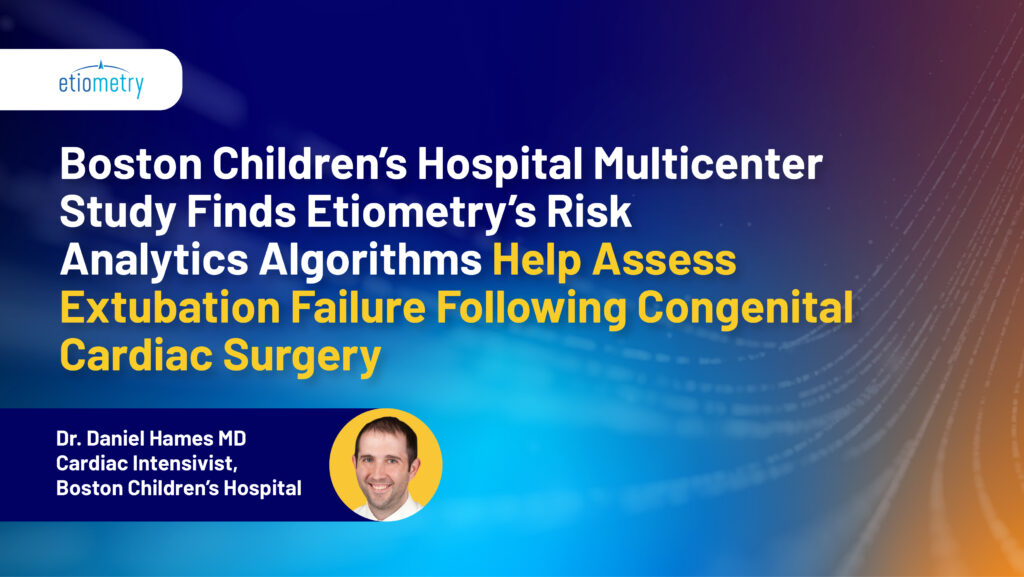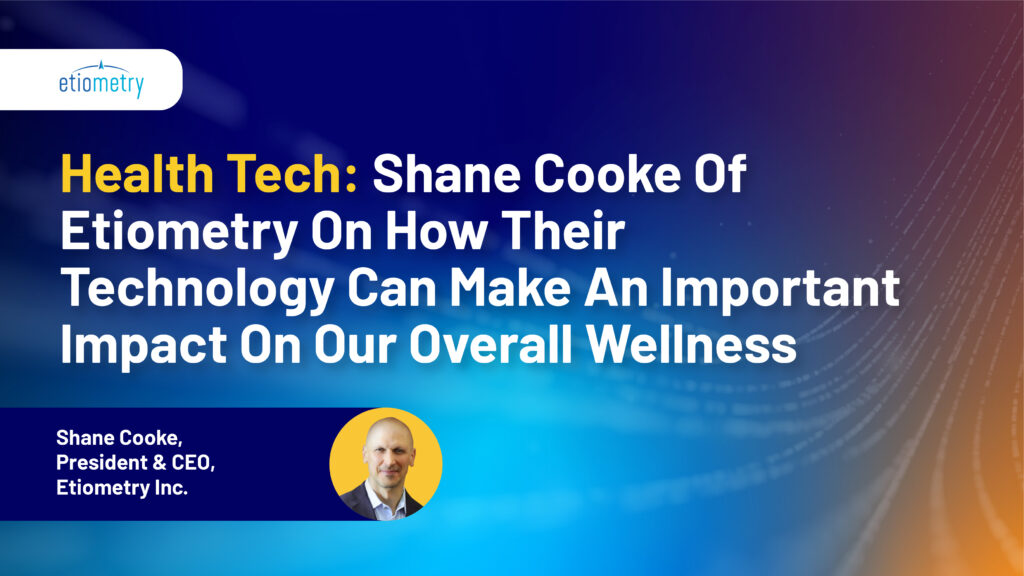Study Summary: The Etiometry Platform Improves Representation of a Patient’s Clinical State Compared to EHR Data
News and Press Releases
Introduction
Earlier this year, research published in the Journal of American Medical Informatics Association revealed that approximately 50% of physiologic events are underrepresented by a conventional electronic health record (EHR) when compared to an automated data aggregation platform. The outcomes are from a study that evaluated the fidelity of a patient’s clinical state when represented by EHR data compared to a clinical decision support platform. This review summarizes the research and the outcomes.
Background
Managing high acuity patients requires caregivers to closely monitor patients’ vital signs as their clinical state can change rapidly. Vital sign data recorded in the EHR every hour may lead to an underestimation of a patient’s deteriorating physiology. One study of the efficacy of hourly vital sign measurements found empirical evidence that data collected in 60-minute intervals were not representative of the patient’s clinical state.1 A clear, up-to-date picture of the patient’s dynamic clinical state is fundamental to intensive care units (ICU), and recognizing subtle changes is paramount to providing care.
Currently, EHR platforms are utilized as the primary data source for clinicians in the ICU. However, studies have shown that the EHR can poorly represent the clinical condition of critically ill patients and may pose an increased risk of error. Many have described the current display and representation of patient data in the EHR as suboptimal.2
In critical care settings, clinical decision support platforms can help overcome the limitations of the EHR. To address the limitations, Etiometry developed a platform to automatically aggregate, visualize, and archive patient data from all patient monitors and connected medical devices in the ICU to provide continuously updated physiologic trends.
Study Synopsis
The study retrospectively evaluated vital signs data archived in a conventional EHR and the Etiometry platform for pediatric patients admitted postoperatively to a tertiary pediatric CICU. The study used the following methods to evaluate outcomes.
- 857 pediatric patients admitted from January 2017 to November 2019
- Monitored heart rate, systolic blood pressure, respiratory rate, pulse oximetry, and end tidal CO2 for 72 hours after admission
- Vital sign data were manually captured in the EHR by the bedside care team
- Concurrent vital sign values were automatically captured by the Etiometry platform
- Established each patient’s unique baseline vital sign values with missed event definition
- Identified missed physiologic events with no vital sign changes recorded in the EHR and vital signs in the Etiometry platform deviated from baseline lasting 3 to 60 minutes
Outcomes Overview
Overall, the study found that the hourly EHR dataset recorded by bedside care team members missed a substantial percentage of overall events. In contrast, the Etiometry platform did not miss any significant events recorded in the EHR, based on the established baseline parameters for the events. The following results are the total percentage of events missed in the EHR.
- 48% heart rate events
- 58% of systolic blood pressure events
- 50% of respiratory rate events
- 54% of total desaturation events
The findings shed light on the limitations of relying exclusively on vital signs documented in the EHR at 60-minute intervals, which can lead to gaps in a patient’s physiologic picture in highly dynamic critical care environments. When changes in a patient’s status are missed, there’s an increased risk of clinical consequences that could lead to an adverse event. For example, delayed or overlooked events may result in a missed opportunity to intervene at an early stage of deterioration or failure to identify evolving conditions like cardiogenic shock. Other studies have shown that recognizing potential deterioration also directly impacts decreased ICU length of stay and fewer readmissions.3
The research study concluded that enrichment of the EHR with automated high-fidelity data may provide a more complete representation of the clinical picture. In addition, access to more comprehensive clinical data from the Etiometry platform may improve risk assessment with clinical decision support compared to relying on EHR data alone.
To read the publication in the Journal of the American Medical Informatics Association, click here.
Download our white paper for a more in-depth overview of how AI technology can supplement EHR systems to reduce clinician stress and improve patient outcomes.
- Maslove, David M. MD, MS, FRCPC1,2; Dubin, Joel A. PhD3,4; Shrivats, Arvind BSc3; Lee, Joon PhD4. Errors, Omissions, and Outliers in Hourly Vital Signs Measurements in Intensive Care. Critical Care Medicine: November 2016 – Volume 44 – Issue 11 – p e1021-e1030 doi: 10.1097/CCM.0000000000001862
- Jalilian L, Khairat S. The next-generation electronic health record in the ICU: a focus on user-technology interface to optimize patient safety and quality. Perspect Health Inf Manag. 2022 Jan 1;19(1):1g. PMID:
- 35440925; PMCID: PMC9013229
- Gaies M, Olive M, Owens G, et al. PEDIATRIC CARDIAC CRITICAL CARE OUTCOMES IMPROVE FOLLOWING IMPLEMENTATION OF A COMMERCIAL DATA AGGREGATION AND VISUALIZATION SOFTWARE PLATFORM. J Am Coll Cardiol. 2019 Mar, 73 (9_Supplement_1) 562.


